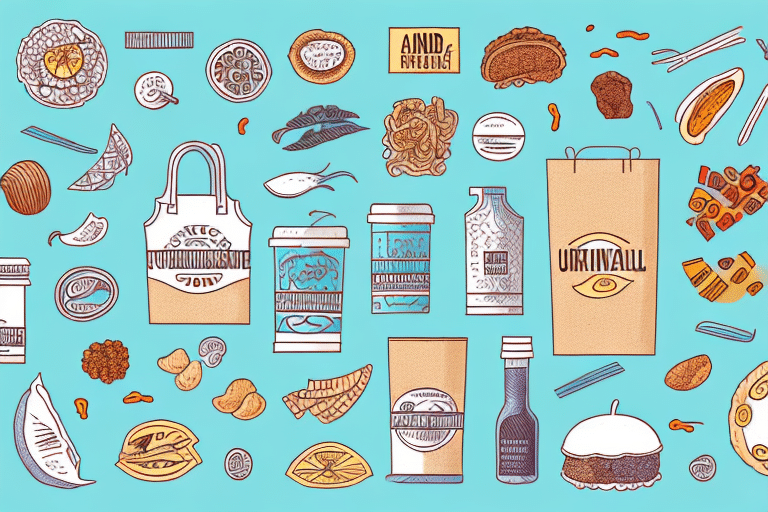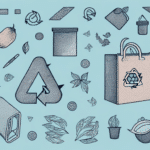The Benefits of Environmentally Friendly Food Packaging
Environmentally friendly food packaging is revolutionizing the food industry by offering sustainable alternatives to traditional packaging materials. This shift not only protects the planet but also presents significant opportunities for businesses in terms of savings, marketability, and innovation. In this comprehensive guide, we explore the various aspects of eco-friendly packaging, its advantages, and the future outlook for sustainable practices in the food sector.
Understanding Environmentally Friendly Food Packaging
Definition and Importance
Environmentally friendly food packaging minimizes waste and pollution, reducing its impact on the environment. It utilizes renewable, biodegradable, or recycled materials to lower the ecological footprint of packaging processes. This sustainable approach is essential in addressing the global challenges of plastic pollution and resource depletion.
Common Sustainable Materials
- Biodegradable Plastics: Derived from plant-based sources like cornstarch or potato starch, these plastics decompose naturally in the environment.
- Recycled Paper and Cardboard: These materials can be reused multiple times and are fully biodegradable.
- Bamboo and Sustainable Wood: Fast-growing and renewable, bamboo is an excellent alternative to traditional wood.
- Edible Packaging: Made from food ingredients such as seaweed, this packaging can be consumed with the product, eliminating waste entirely.
The Environmental Impact of Conventional Packaging
Pollution and Waste Generation
Traditional packaging materials like plastic, polystyrene, and aluminum have severe environmental repercussions. They are non-biodegradable and can persist in ecosystems for thousands of years, contributing to ocean pollution and harming wildlife. According to [National Geographic](https://www.nationalgeographic.com/environment/article/plastic-pollution), over 8 million tons of plastic enter our oceans annually.
Resource Depletion and Emissions
The production of conventional packaging often relies on non-renewable resources and involves energy-intensive processes that emit significant greenhouse gases. This not only exacerbates climate change but also depletes natural resources essential for future generations.
Advantages of Switching to Eco-Friendly Packaging
Environmental Benefits
Adopting sustainable packaging dramatically reduces waste and pollution, contributing to a cleaner and healthier environment. It supports the transition to a circular economy, where materials are reused and recycled, minimizing resource extraction and environmental degradation.
Economic and Marketing Advantages
Eco-friendly packaging can enhance a company's reputation by demonstrating a commitment to sustainability. This attracts environmentally conscious consumers, fostering brand loyalty and increasing market share. Additionally, sustainable packaging can lead to cost savings through reduced material usage, lower waste disposal fees, and potential tax incentives.
Regulatory Compliance and Future-Proofing
With governments worldwide implementing stricter environmental regulations, transitioning to sustainable packaging ensures compliance and mitigates the risk of fines or legal challenges. Companies that adopt eco-friendly practices early position themselves advantageously as regulations become more stringent.
Types of Environmentally Sustainable Packaging Materials
Biodegradable and Compostable Materials
These materials break down naturally, reducing landfill waste. Examples include:
- Plant-based plastics from cornstarch or sugarcane
- Paperboard and cardboard made from recycled content
- Packaging made from natural fibers like hemp or jute
Recycled and Upcycled Materials
Recycled materials repurpose existing waste, conserving resources and reducing the need for new raw materials. Upcycled materials transform by-products or waste into new products of higher quality or environmental value.
Innovative Materials
Edible packaging and smart packaging technologies are emerging as cutting-edge solutions. Edible packaging eliminates waste by being consumable, while smart packaging incorporates sensors to monitor freshness and reduce food waste.
Cost Savings and Business Benefits of Eco-Friendly Packaging
Long-Term Financial Gains
While the initial investment in sustainable packaging may be higher, the long-term savings can be substantial. Reduced material costs, lower waste management fees, and energy-efficient production processes contribute to overall cost reductions. For instance, adopting recycled materials can decrease raw material expenses by up to 20%, according to a study by [Sustainable Packaging Coalition](https://sustainablepackaging.org/).
Enhanced Brand Image and Consumer Trust
Consumers are increasingly prioritizing sustainability in their purchasing decisions. Companies that utilize eco-friendly packaging can differentiate themselves in the market, fostering trust and loyalty among consumers who value environmental responsibility.
Implementing Environmentally Sustainable Packaging Solutions
Steps to Transition
- Assess Current Packaging: Evaluate existing packaging materials and processes to identify areas for improvement.
- Research Sustainable Alternatives: Identify and select materials that align with your business needs and sustainability goals.
- Develop Sustainable Packaging Designs: Optimize packaging design to minimize material usage and enhance functionality.
- Educate and Train Stakeholders: Ensure that employees and consumers understand the benefits and proper disposal methods of sustainable packaging.
- Monitor and Improve: Continuously assess the effectiveness of sustainable practices and seek opportunities for further improvement.
Overcoming Implementation Challenges
Transitioning to eco-friendly packaging poses challenges such as higher initial costs and limited availability of sustainable materials. However, these can be mitigated through strategic partnerships, investment in research and development, and leveraging government incentives aimed at promoting sustainability.
Future Trends and Innovations in Eco-Friendly Packaging
Advancements in Material Science
Innovations like biodegradable plastics that decompose within months and smart packaging that extends shelf life are paving the way for more sustainable solutions. Companies are investing in research to develop materials that offer both functionality and environmental benefits.
Consumer-Driven Changes
As consumer awareness grows, demand for sustainable packaging is increasing. Businesses are responding by adopting reusable and refillable containers, reducing plastic usage, and exploring edible packaging options to meet consumer expectations.
Regulatory Developments
Governments are introducing stricter regulations to curb plastic waste and promote sustainability. Anticipated policies include bans on single-use plastics, incentives for using recycled materials, and standards for biodegradable packaging, which will drive further adoption of eco-friendly practices.
Case Studies: Successful Implementation of Eco-Friendly Packaging
Major Industry Players Leading the Way
Companies like McDonald's and Starbucks have made significant commitments to sustainable packaging. McDonald's is transitioning to paper-based straws and expanding the use of recyclable materials, while Starbucks aims to eliminate plastic straws and increase the use of compostable cups. Nestlé has pledged to make 100% of its packaging recyclable or reusable by 2025, showcasing the industry's shift towards sustainability.
The Future Outlook for Environmentally Friendly Food Packaging
The trajectory for eco-friendly food packaging is promising, driven by increasing environmental awareness, technological advancements, and supportive regulations. As sustainability becomes a core aspect of business strategy, the food industry is poised to embrace innovative packaging solutions that balance functionality with environmental stewardship. The continued collaboration between businesses, governments, and consumers will be pivotal in achieving a sustainable and waste-free future.






















